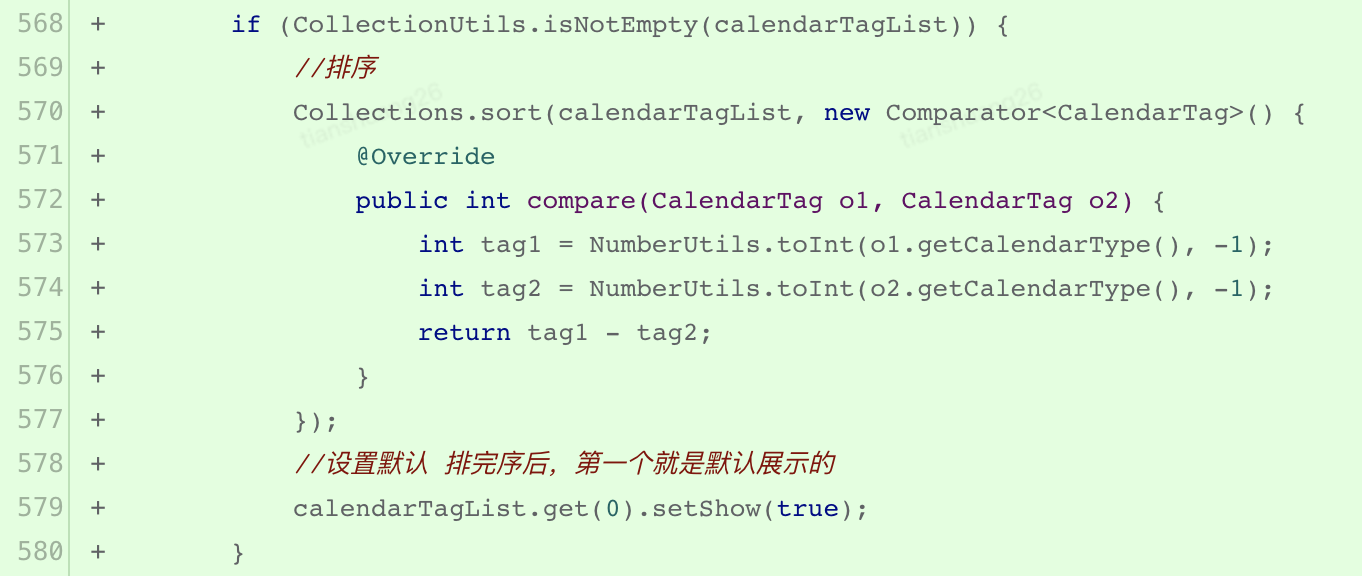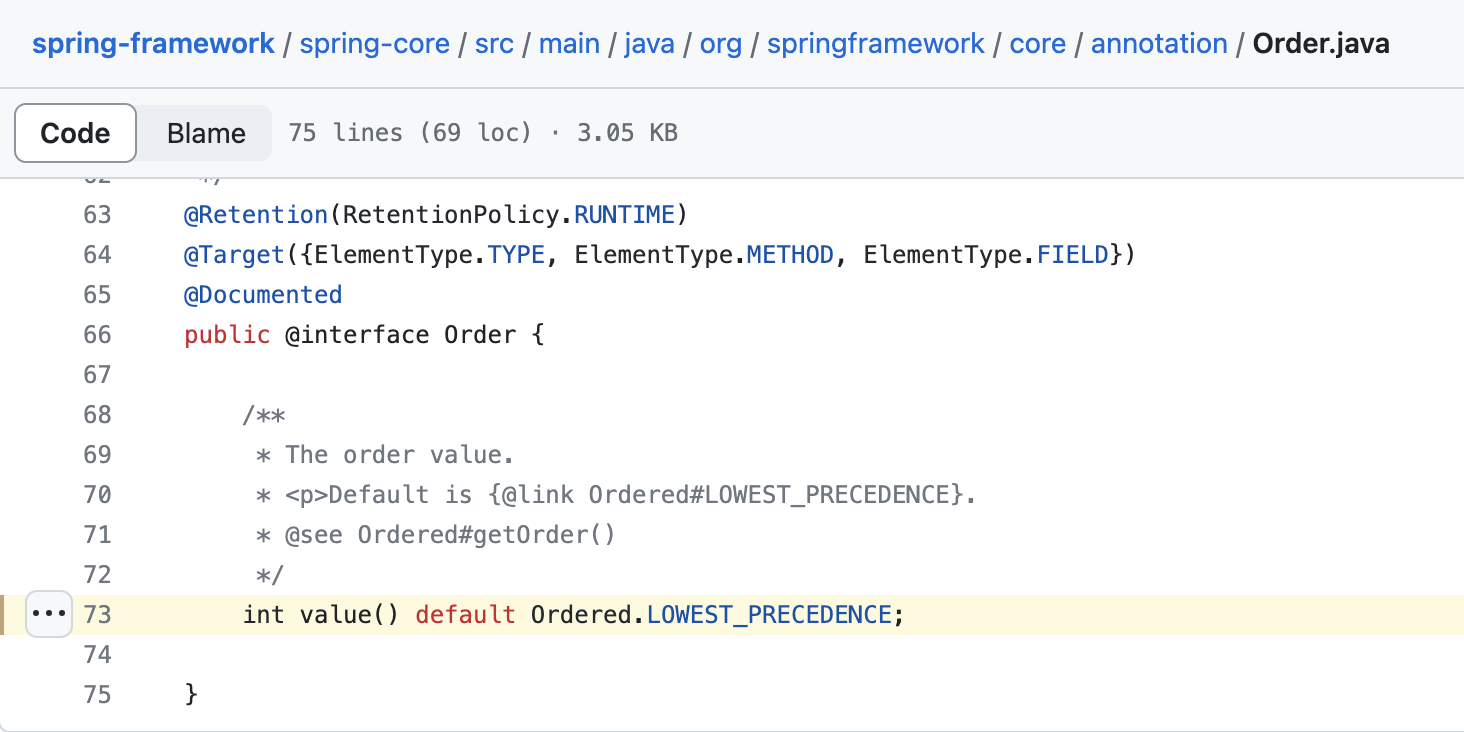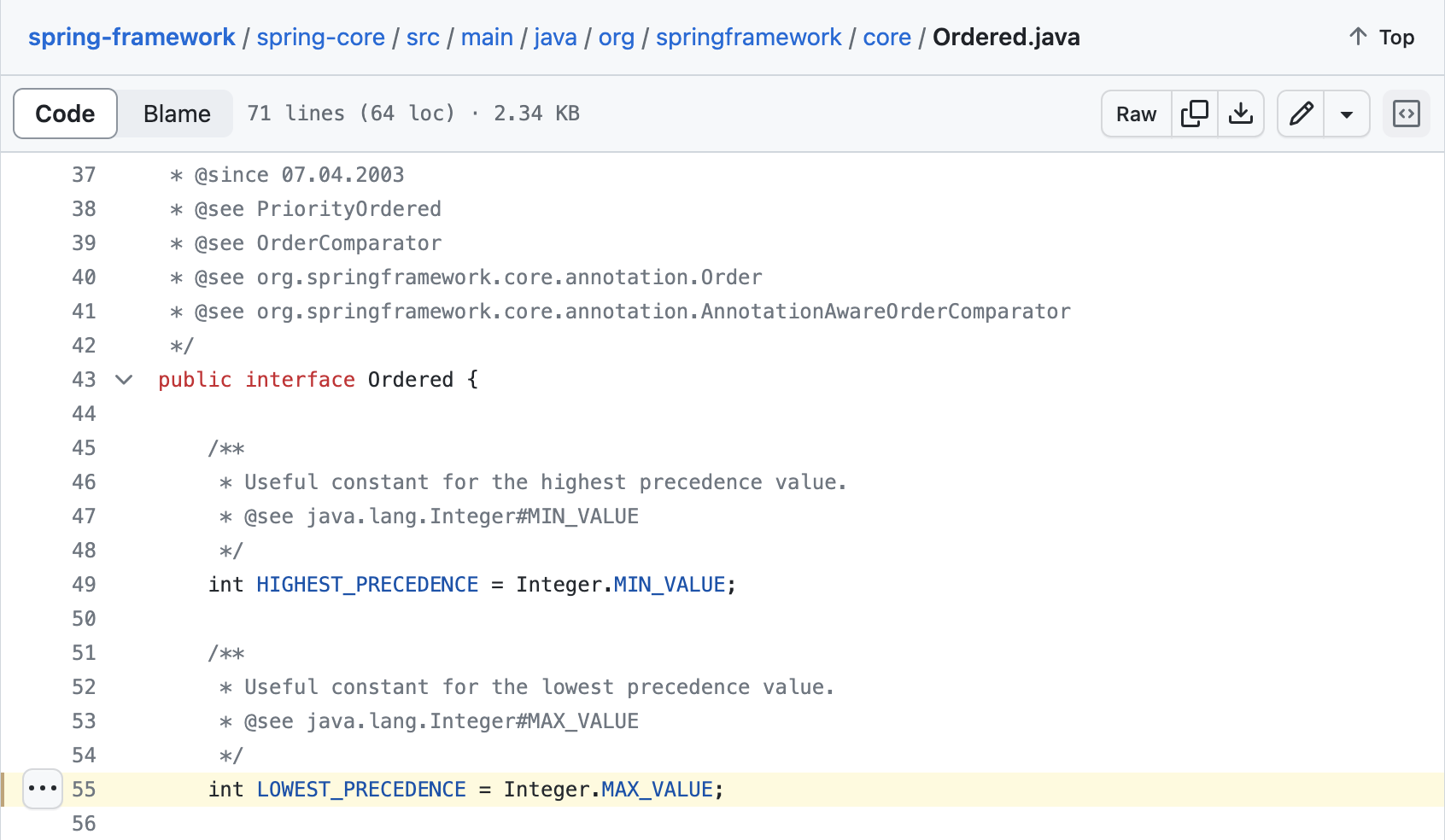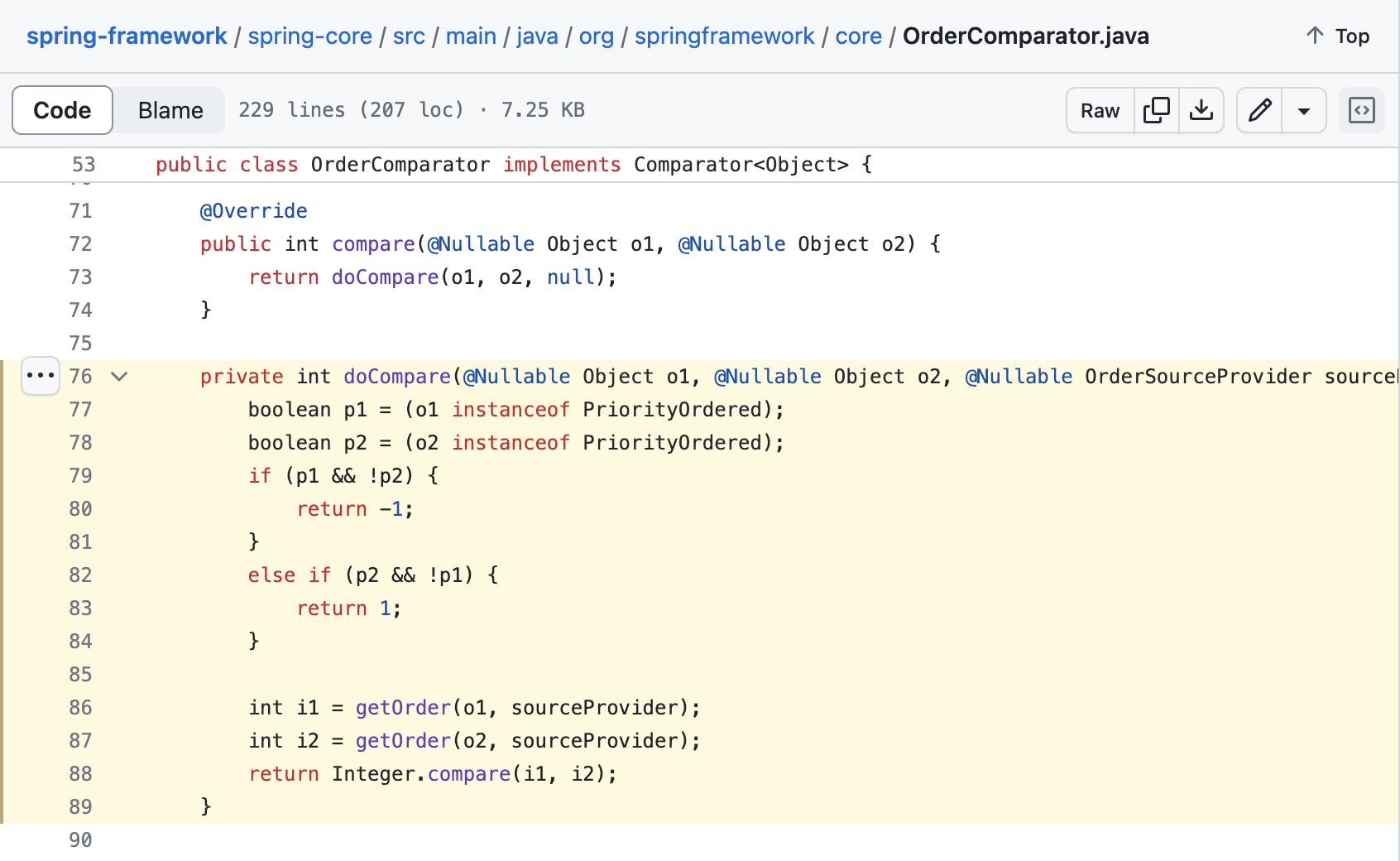作者:平台技术部-履约平台组
刘建设 张九龙 田爽
在平时的开发过程中,整数越界是一个容易被忽视的问题,关注潜在的整数越界问题可使我们编写的代码更加健壮,规避因整数越界导致的 bug。
比较器
以下是在 Code Review 中发现的比较器实现:

乍一看该比较器实现不存在问题,但是如果 tag1 = Integer.MIN_VALUE = -2147483648, tag2 为大于 0 的数字如 1,则此时 tag1 - tag2 = 2147483647,但是按照 java.util.Comparator#compare 的定义,tag1 小于 tag2 时,应该返回一个负数,以上写法在遇到这样的示例数据时将导致排序结果错乱,引发相关 bug。
下面看看 Spring 中比较器的实现,在 Spring 中,提供了 @Order 注解用于指定 bean 的顺序,默认值为 Ordered.LOWEST_PRECEDENCE = Integer.MAX_VALUE,即在排序时排在最后,相关源码如下:


对应的比较器实现如下:

可知其采用的 Integer.compare 方法对两个整数进行比较操作,查看 Integer#compare 方法的源码:
/**
* Compares two {@code int} values numerically.
* The value returned is identical to what would be returned by:
* <pre>
* Integer.valueOf(x).compareTo(Integer.valueOf(y))
* </pre>
*
* @param x the first {@code int} to compare
* @param y the second {@code int} to compare
* @return the value {@code 0} if {@code x == y};
* a value less than {@code 0} if {@code x < y}; and
* a value greater than {@code 0} if {@code x > y}
* @since 1.7
*/
public static int compare(int x, int y) {
return (x < y) ? -1 : ((x == y) ? 0 : 1);
}可知 java.lang.Integer#compare 并未采取 x - y 的方式进行比较,而是使用小于及等于运算符直接进行比较,规避了潜在的整数越界问题。 那么文首代码正确的实现方式应为 return Integer.compare(tag1, tag2)。如果查看 JDK 中常见数值类的源码,可知均提供了静态的 compare 方法,如:java.lang.Long#compare,java.lang.Double#compare,此处不再赘述。
切量比例

以上代码是某段业务逻辑中初始切量比例实现,取余 100 的模式常用于按比例切量、按比例降级等业务场景。以上代码使用 userPin 的哈希值取余 100 判断是否小于切量比例以决定是否执行新业务逻辑,如果我们查看 java.lang.String#hashCode 的源码实现:
/**
* Returns a hash code for this string. The hash code for a
* {@code String} object is computed as
* <blockquote><pre>
* s[0]*31^(n-1) + s[1]*31^(n-2) + ... + s[n-1]
* </pre></blockquote>
* using {@code int} arithmetic, where {@code s[i]} is the
* <i>i</i>th character of the string, {@code n} is the length of
* the string, and {@code ^} indicates exponentiation.
* (The hash value of the empty string is zero.)
*
* @return a hash code value for this object.
*/
public int hashCode() {
int h = hash;
if (h == 0 && value.length > 0) {
char val[] = value;
for (int i = 0; i < value.length; i++) {
h = 31 * h + val[i];
}
hash = h;
}
return h;
}可知 java.lang.String#hashCode 本质上是对字符串进行 s[0]*31^(n-1) + s[1]*31^(n-2) + ... + s[n-1] 多项式求值,此处潜在的风险在于计算出的 hash 值可能越界,导致 userPin.hashCode() 返回值为负数,如:"jd_xxxxxxxxxxxx".hashCode() = -1406647067,且在 Java 语言中,使用负数对正数取余,是可能得到负数的。以上代码的风险在于潜在的放大了期望的切量比例,如使用以上的代码进行上线,那么当我们设定 1% 的切量比例时,会导致远超 1%的用户执行新的业务逻辑(通过采样日志发现用户 pin 集合 hashCode 值负数占比并不低),导致非预期的切量结果。
基于以上的背景,容易想到的一种修复方案为在 userPin.hashCode 外层使用 Math.abs 保证取余前的数字为正数:

以上修复方案看似不再存在问题,但是并不能保证完全正确,我们查看 Math.abs 的源码实现:
/**
* Returns the absolute value of an {@code int} value.
* If the argument is not negative, the argument is returned.
* If the argument is negative, the negation of the argument is returned.
*
* <p>Note that if the argument is equal to the value of
* {@link Integer#MIN_VALUE}, the most negative representable
* {@code int} value, the result is that same value, which is
* negative.
*
* @param a the argument whose absolute value is to be determined
* @return the absolute value of the argument.
*/
public static int abs(int a) {
return (a < 0) ? -a : a;
}可知在注释中特意提到,如果入参是 Integer.MIN_VALUE,即 int 域中最小的值时,返回值依然为 Integer.MIN_VALUE,因为 int 域的范围为 [-2147483648, 2147483647]。如果按照 JLS 中的解释,-x equals (~x)+1。那么可知:
x = Integer.MIN_VALUE:
10000000_00000000_00000000_00000000
~x:
01111111_11111111_11111111_11111111
(~x) + 1:
10000000_00000000_00000000_00000000如果在神灯上搜索 Math.abs,可以发现有三篇文章与该函数有关,均与 Math.abs(Integer.MIN_VALUE) 依然为 Integer.MIN_VALUE 有关。而我们在 Code Review 阶段发现该问题即从根本上规避了该问题,不会使存在 bug 的代码上线。最后切量比例修改后的实现如下:

总结
- java.lang.String#hashCode 在计算过程中可能因为整数越界导致返回值为负数
- Java 语言中的 % 是取余而不是取模,如:(-21) % 4 = (-21) - (-21) / 4 *4 = -1
- Math.abs(int a) 当入参是 Integer.MIN_VALUE 时返回值依然是负数 Integer.MIN_VALUE
参考
15.15.4. Unary Minus Operator -
What's the difference between “mod” and “remainder”? - Stack Overflow
Best way to make Java's modulus behave like it should with negative numbers? - Stack Overflow











